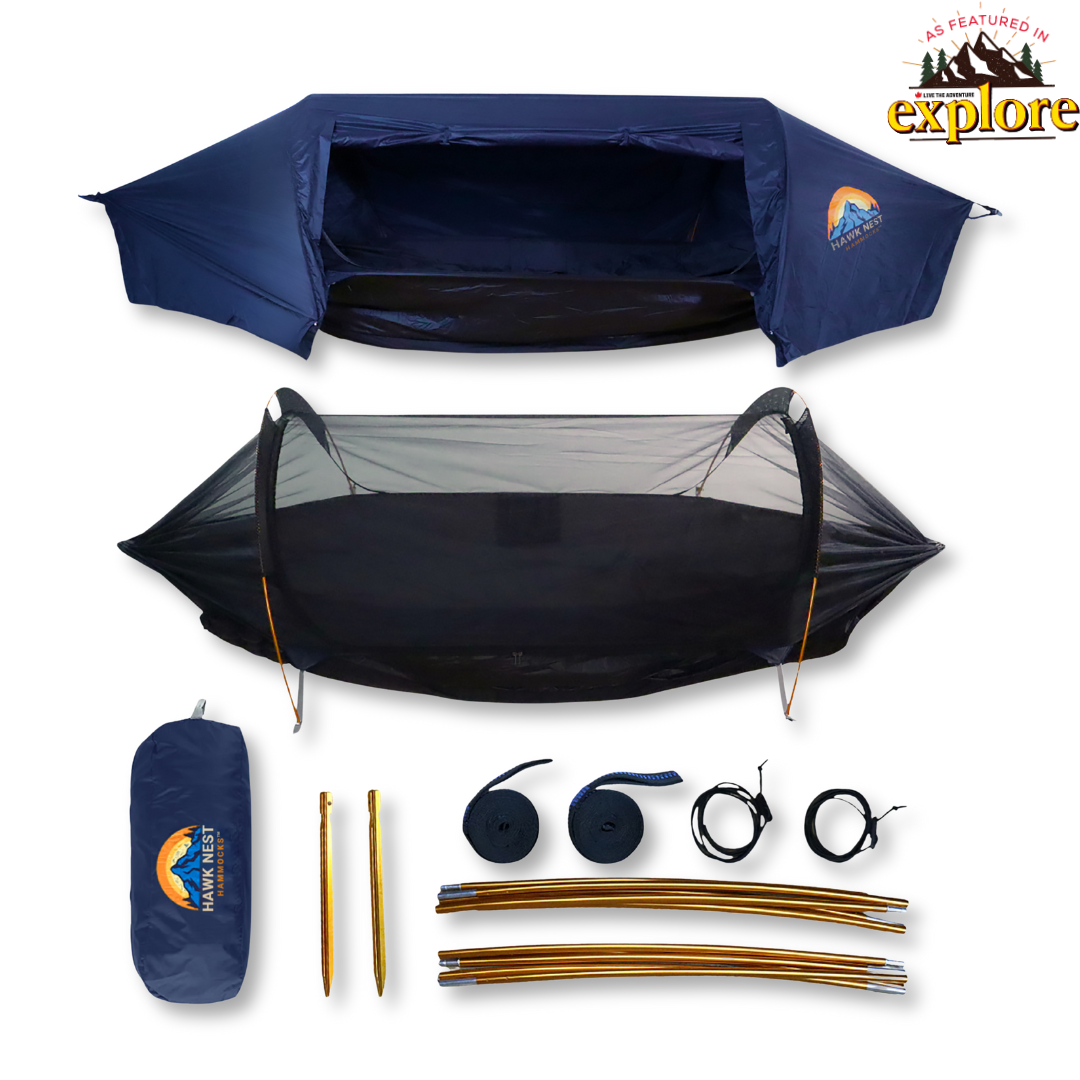Table Of Contents
- Choosing Your Bikepacking Tent
- Key Features to Consider
- Best Bikepacking Tents on the Market
- Setting Up Your Tent
- Frequently Asked Questions
Choosing Your Bikepacking Tent
When it comes to bikepacking, one of the essential items you need is a reliable tent. Choosing the right bikepacking tent can greatly influence your comfort and enjoyment during the trip. Bikepacking tents are specifically designed to be lightweight and compact, yet durable enough to withstand various weather conditions. This makes them perfect for fitting into bikepacking bags without adding too much weight.
When selecting your tent, consider how it will fit with your bikepacking setup. The ideal tent is not only easy to carry but also quick to set up and pack away. Look for tents that offer a balance of space and simplicity. You don't want something too cumbersome to handle after a long day of cycling.
Additionally, think about the environments you plan to explore. If you're heading into areas known for unpredictable weather, you'll need a tent that offers excellent waterproofing and wind resistance. Conversely, for milder climates, you might prioritize ventilation and a lighter build to enhance your bikepacking experience.
Finally, consider your budget. Bikepacking tents come in a range of prices, and investing in a high-quality tent can save you from discomfort and trouble on your adventures. Remember, a good bikepacking tent is an investment in your comfort and safety while exploring the great outdoors.
To get started, list what you expect from your tent in terms of size, weight, and specific features. This will help you narrow down your choices and find the tent that best suits your bikepacking needs.
Key Features to Consider
When planning for your next bikepacking adventure, it's crucial to focus on the key features of a bikepacking tent that will best suit your needs. Here are some important aspects to consider:
1. Weight: One of the primary considerations should be the weight of the tent. Since you'll be carrying this tent on your bike, it's essential to choose a model that is as lightweight as possible without compromising on durability and protection. Look for tents made with ultralight materials that can easily be attached to your bike or fit inside a bikepacking bag.
2. Size and Capacity: The size of the tent is another critical factor. You need to decide how many people will be using the tent. Solo bikepackers might prefer a one-person tent to minimize weight and space, while those traveling in groups may need a two-person or even three-person tent. Consider how much room you'll need to sleep comfortably, as well as any extra space required for your gear.
3. Ease of Setup: After a long day of riding, you’ll appreciate a tent that is easy to set up. Look for bikepacking tents with simple and intuitive designs that can be assembled quickly and easily. Freestanding tents, for example, can be a great choice as they often require less time and effort to pitch.
4. Durability: The materials and construction of the tent determine its durability. A good bikepacking tent should withstand varied weather conditions, so it’s important to choose one with robust, weather-resistant materials. Look for tents with reinforced seams and high-quality poles that can endure strong winds and heavy rains.
5. Ventilation: Proper ventilation is vital, especially in warmer climates or during the summer months. Adequate airflow will help prevent condensation inside the tent, making your sleep more comfortable. Ensure the tent has multiple ventilation options, such as mesh panels or adjustable air vents.
By considering these key features, you can choose a bikepacking tent that will provide comfort, convenience, and reliability on your cycling trips, ensuring you have a safe and enjoyable experience outdoors.
Best Bikepacking Tents on the Market
Choosing the best bikepacking tent for your adventures can be a daunting task given the myriad options available. Here, we'll highlight some of the top-rated bikepacking tents that are popular among cyclists for their exceptional balance of weight, durability, and convenience.
Hawk Nest Hammock: This tent is a favorite among bikepacking enthusiasts. It's extremely lightweight and compact, making it easy to carry on long rides. The Hawk Nest also features a quick setup design and robust weatherproofing, making it ideal for varying climatic conditions. Great for all season use as well.
TrailBlazer Solo: Designed for solo travelers, this tent is minimalistic yet sturdy. It offers excellent waterproofing and wind resistance, and is known for its durability against the elements. Its compact design fits perfectly with bikepacking gear, making it a great choice for those looking to minimize their load.
EcoVenture Duo: If you're bikepacking with a partner, the EcoVenture Duo is a fantastic choice. It provides ample space for two people and their gear, without compromising on the ease of transport. Additionally, its innovative ventilation system ensures a comfortable and condensation-free environment inside.
Alpine Bikepacker: Suitable for harsher weather conditions, the Alpine Bikepacker offers enhanced structural strength and superior protection from the elements. Its reinforced seams and robust poles provide peace of mind in windy or rainy environments, making it a reliable choice for more adventurous routes.
Streamline Nomad: The Streamline Nomad is celebrated for its ultra-light design and quick setup. Ideal for those who want to set up camp quickly and get back on the road, this tent is both functional and hassle-free, perfect for fast-paced bikepacking trips.
Each of these tents has been designed with bikepackers in mind, offering features that help enhance the overall outdoor experience. Whether you’re a solo adventurer or part of a duo, these options provide excellent shelters that cater to the specific needs of bikepacking enthusiasts.
| Tent Model | Weight | Capacity | Setup Time | Price Range |
|---|---|---|---|---|
| Hawk Nest Hammock | 1.4 kg | 1 person | 3 minutes | $$ |
| TrailBlazer Solo | 1.5 kg | 1 person | 5 minutes | $$$ |
| EcoVenture Duo | 2.0 kg | 2 persons | 7 minutes | $$$$ |
| Alpine Bikepacker | 2.5 kg | 3 persons | 8 minutes | $$$$$ |
| Streamline Nomad | 1.4 kg | 1 person | 4 minutes | $$$ |
Setting Up Your Tent
Properly setting up your bikepacking tent is crucial for ensuring a comfortable and secure night's sleep while out on the trails. Here are some steps and tips to help you efficiently pitch your tent, so you can relax and enjoy your bikepacking adventures.
1. Choose the Right Spot: Start by selecting a flat, sheltered area to set up your tent. Avoid areas under trees due to the risk of falling branches, and look for natural windbreaks if possible. Ensure the ground is clear of sharp objects that could damage the tent.
2. Lay Out the Tent: Unpack your bikepacking tent and lay it out on the ground. Position it so the door faces a desirable direction, perhaps facing away from prevailing winds or towards a scenic view if available.
3. Assemble the Poles: Connect the tent poles, which are usually segmented and snap together. Some bikepacking tents use a color-coding system to help match poles with the corresponding sleeves or clips on the tent, making the setup process more straightforward.
4. Secure the Tent to the Poles: Insert the poles into the designated sleeves or attach them to the clips provided. This forms the basic structure of your tent. Make sure everything is properly aligned and that the fabric is taut to avoid any sagging.
5. Stake the Tent: Once the tent’s structure is up, secure it to the ground using stakes. This step is crucial for wind resistance and overall stability. Angle the stakes away from the tent and drive them into the ground firmly.
6. Attach the Rainfly: If you expect dew or rain, don’t forget to cover your tent with the rainfly. The rainfly provides an additional layer of protection against the elements, keeping you dry and comfortable inside your bikepacking tent. Make sure it’s secured and pulled tight to prevent water pooling.
7. Final Adjustments: Walk around your tent to make any final adjustments. Ensure all zippers are closed to keep insects out and that the tent is as secure as possible.
By following these steps, you can set up your bikepacking tent quickly and efficiently, ensuring that you have a safe and snug shelter for your night in the wilderness.
Frequently Asked Questions
Do you need a tent for bikepacking?
Yes, a tent is essential for bikepacking as it serves as your shelter, protecting you from the elements and providing a place to rest after a day's ride. The type of tent you choose should be light, easy to pack, and capable of handling various weather conditions.
How much should a tent weigh for bikepacking?
The weight of a bikepacking tent typically ranges from 1 to 3 kilograms (2-6 pounds). Ultralight options are available for those prioritizing minimal weight, though it's important to consider comfort, durability, and weather resistance alongside weight.
What are the key features to look for in a bikepacking tent?
When selecting a bikepacking tent, consider its weight, durability, and ease of setup. Additionally, ensure it has sufficient space for the number of users and gear, and that it offers good weather protection.
Sources
Explore More
For more detailed reviews and information on bikepacking tents, check out our comprehensive guides:
Visit Our Pages
Check out our top products and learn more about what we offer:

